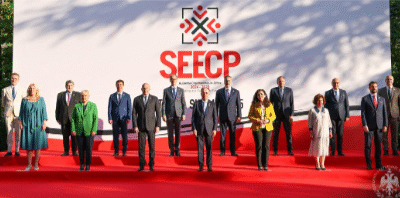A ruling by the Rome Court of Appeal has sent shockwaves through Italy`s flagship migration deal with Albania, not simply because it overturned the detention of a Moroccan migrant in the Albanian camp of Gjadër, but because it exposed the legal and structural cracks at the very heart of the agreement. Touted as a breakthrough solution to irregular migration, the Italy-Albania protocol is beginning to show signs of fragility. Its carefully controlled narrative of border enforcement and rapid deportation now faces a challenge far more potent than political opposition: judicial scrutiny.
The case that sparked this legal earthquake involves a 30-year-old man from Morocco. After serving time in Italy for unspecified crimes, he was not released, but instead transferred to Albania on April 11, under the provisions of the bilateral protocol signed in late 2023. Once in Gjadër, a facility Italy operates on Albanian soil, he did something unexpected: he applied for asylum.
Within days, Italy’s judiciary intervened. The Rome Court of Appeal ruled that once an asylum request is filed, the nature of detention changes. It is no longer a matter of deportation, but a legal process with rights attached, rights that cannot be suspended just because the person is now outside Italy’s borders. The court not only ordered his return to Italy but also his release, branding his detention as unlawful.
At the center of the controversy lies a fundamental legal dilemma: Who has jurisdiction over a migrant who is transferred from Italian to Albanian territory but is still under Italy’s effective control? The protocol assumes two categories: migrants stopped at Italy’s borders (border procedures), and those being deported (repatriation procedures). But when someone who was forcibly removed to Albania claims asylum for the first time, a scenario not clearly envisioned by the agreement, the system short-circuits. Suddenly, this isn’t a “border case,” nor a standard deportation. It`s a third, undefined category that has no legal home in the protocol’s structure.
Italy tried to pre-empt such complications by tweaking its law in March, expanding the use of Albanian facilities to include “irregular migrants,” not just those blocked at borders. But law making cannot outrun legal principles. The moment an asylum claim is filed, international protection laws kick in. And those laws don’t recognize
offloading legal responsibility across borders.
Just hours after the court’s decision, Italy’s Interior Minister Matteo Piantedosi announced a “success”: the first official repatriation from the Gjadër center. A Bangladeshi national, previously convicted of serious crimes, was deported to his country of origin, a move Piantedosi framed as a victory in the fight against illegal immigration. But the timing raised eyebrows. It looked less like a milestone and more like a distraction. Moreover, it turns out that even in this “success story,” the individual was first brought back to Italy before being deported, reaffirming the inconvenient truth: all legal procedures, even those initiated in Albania, must conclude under Italian jurisdiction.
The Bigger Picture: A Deal in Doubt
The Italy-Albania agreement was always controversial, not only because it outsourced parts of Italy’s migration management to a non-EU country, but because it walked a fine line on international legal obligations. Now, with courts stepping in, that line may have been crossed.
The Moroccan case is not an anomaly; it’s a precedent. And legal precedents have a way of unravelling political plans. If one court can invalidate a detention in Albania on legal grounds, what happens when more migrants, and more lawyers, test the system? What happens when asylum becomes the legal lever that breaks the machinery of forced transfers? Behind the scenes, policymakers may now be asking themselves a difficult question: was this deal designed to be legally watertight, or just politically persuasive?
Written by our correspondent A.T.



